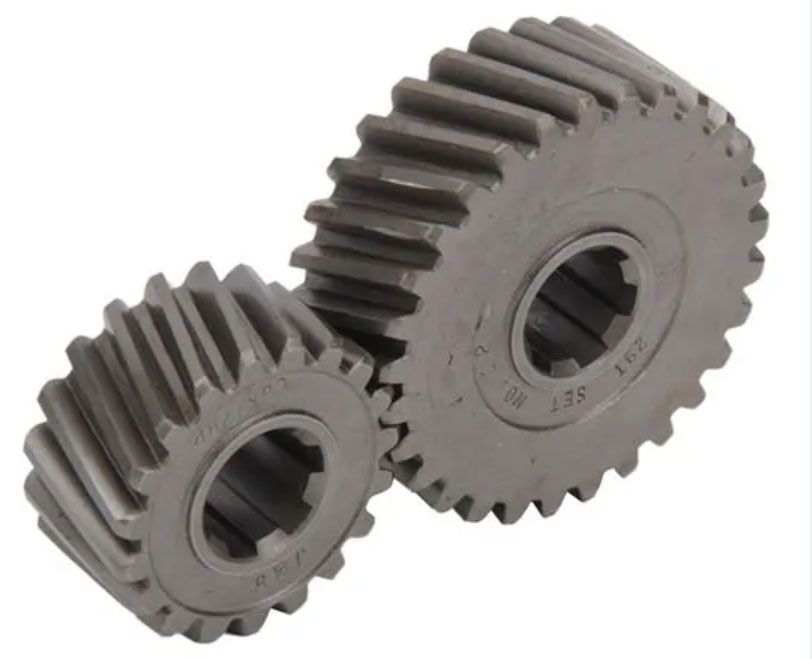
Helical gears are a type of cylindrical gears with teeth that are cut at an angle to the gear axis, resulting in a helix shape. The helix angle creates a gradual engagement between the teeth, leading to smoother and quieter operation compared to spur gears. Here’s an overview of the mechanics and applications of helical gears:
Mechanics of Helical Gears:
- Helix Angle: Helical gears have teeth cut at an angle to the gear axis, known as the helix angle. This angle determines the inclination of the tooth helix relative to the gear axis.
- Axial Thrust: Due to the helix angle, helical gears create axial thrust along the gear axis during operation. This thrust is absorbed by thrust bearings or integrated into the design of the gear system.
- Contact Ratio: The contact ratio of helical gears is higher than that of spur gears. Multiple teeth are in contact simultaneously, distributing the load and reducing wear.
- Tooth Profile: Helical gear teeth have a modified involute profile to ensure proper meshing and minimize sliding friction during engagement.
- Right and Left-Handed Gears: Helical gears can be classified as right-handed (clockwise helix) or left-handed (counterclockwise helix), depending on the direction of the helix angle.
- Parallel or Crossed Axes: Helical gears can be used in parallel shaft configurations (parallel helix gears) or crossed shaft configurations (intersecting helix gears).
Applications of Helical Gears:
- Automotive Transmissions: Helical gears are commonly used in automotive manual transmissions. They provide smooth gear shifting, reduced noise, and improved load distribution.
- Industrial Machinery: Helical gears are widely used in various industrial machinery, including conveyors, mixers, pumps, and machine tools. Their quiet operation and high load-carrying capacity make them suitable for heavy-duty applications.
- Marine Applications: Helical gears are used in marine propulsion systems, gearboxes, and winches in boats and ships.
- Aerospace: Helical gears find applications in aircraft actuators, landing gear mechanisms, and other aerospace components.
- Robotics and Automation: Helical gears are used in robotic arms, CNC machines, and other automated systems where precision and smooth motion are essential.
- Power Generation: Helical gears are utilized in power generation equipment, such as wind turbines and hydropower generators.
- Mining and Construction Equipment: Heavy machinery in the mining and construction industries, such as excavators and bulldozers, often use helical gears for their robustness and efficiency.
- Printing Presses: Helical gears are employed in printing presses to achieve accurate and high-speed paper feeding.
The advantages of helical gears, including their smooth operation, high load capacity, and reduced noise levels, make them suitable for various applications in industries where precision, reliability, and efficiency are critical.
